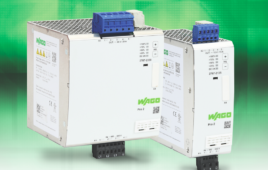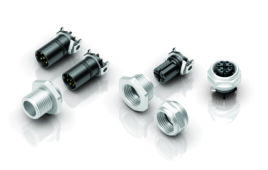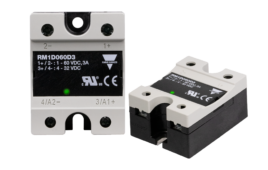When it comes to keeping electronics cool, you have several choices. For enclosures, packaged air conditioners cool internal electrical components. The conditioners mount directly to the enclosure and are selected based on the amount of heat gain, interior air temperature requirements and, since the heat from the interior is rejected by the condenser of the air conditioner into the area adjacent to the enclosure, are also selected based on the ambient air conditions in the immediate vicinity.
Many industrial applications involve harsh environments including air laden with dust, grit, and/or oil mist, packaged air conditioners are not always easily applied and a remote cooling solution is required. Remote cooling moves the enclosure heat to a location away from its installation site – allowing the control enclosure to be sealed against the operation environment.

The compact design and high cooling capacity of packaged water chillers allows for perfect integration with virtually any closed loop or once-through system. These cooling systems normally feature 50/60Hz operation, UL or CE certifications, and are available with capacities from 3 to 40kW.
Remote cooling may involve using the air conditioner with a remote condenser or “split” refrigeration system. Here, the refrigerant compressor and evaporator remain packaged in the locally installed air conditioner. But the condenser is located in a more environmentally favorable location. Because the refrigerant gas from the compressor must be sent to the remote condenser, and the condensed refrigerant liquid must be returned to the conditioner’s evaporator, the piping between the local and remote components becomes an important part of the split system. If piping size and geometry are not properly engineered, the cooling system will be under capacity and the potential for problems with lubrication can cause premature compressor failure. Split systems also require charging the cooling circuit with refrigerant in the field and one remote condenser for each local condition is needed.
Another option for remote cooling involves equipping the control enclosure with an air-to-water heat exchanger that uses chilled water and a fan to condition and re-circulate the air within the cabinet. In this case, the entire refrigeration system is installed in a remote location and chilled water or a water-glycol combination is circulated to the enclosure-mounted device to remove the heat. Circulating a single-phase fluid makes the connecting piping a less critical element of the system.
An air-to-water device can be beneficial for industrial applications. Because the heat exchanger uses chilled water instead of vapor comp-ression refrigeration, it provides a sufficient cooling in a small package. In some cases, a single air-to-water heat exchanger can take the place of two or more air conditioners.
Air-to-water remote cooling can also offer increased energy efficiency when compared to using local air conditioners in environments where high ambient temperatures result in high refrigerant condenser pressures. As the refrigerant condensing pressure increases, the energy input for the compressor increases resulting higher operating costs. Contaminate-laden ambient air contributes to this situation by fouling the condenser coil and reducing its heat transfer efficiency. These problems are avoided by using a system where the refrigeration source is remote. If the chiller is located outdoors, there are additional efficiency gains to be made when seasonal changes in ambient air temperature allow lower refrigerant condensing pressures and lower operating costs.
The remote chiller-based system allows several enclosures to be cooled with a single chiller reducing equipment and installation costs. The chiller is selected to circulate the water flow rate required by the total number of air-to-water heat exchangers and programmed to maintain a fixed water temperature. Each enclosure-mounted heat exchanger controls the amount of coolant that it receives from the common coolant loop based on its own local temperature controller. The controller can be programmed to either maintain a fixed temperature or a variable temperature relative to the dew point temperature inside the enclosure to avoid condensation.
This coolant loop setup also provides an easy method of increasing reliability through redundancy. A second full-capacity chiller, installed in parallel with the primary chiller will provide up to 100% back-up for the cooling system. Simple controls are available to allow the back up chiller to be brought on line automatically in the event of a cooling failure. These controls can also rotate the lead and lag chillers to provide even duty cycles and ensure that the off line chiller is always ready.
Pfannenberg, Inc.
www.pfannenbergusa.com
::Design World::
Filed Under: ELECTRONICS • ELECTRICAL





Tell Us What You Think!